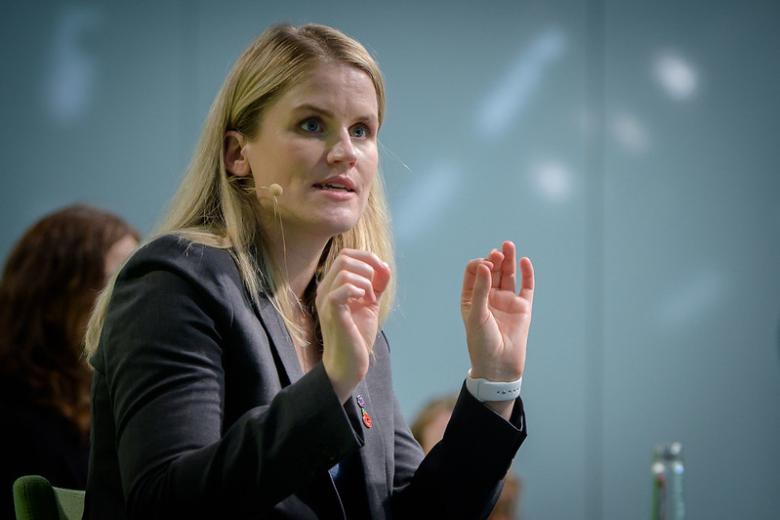Transparency and legal certainty of the references to international standards in EU law: smoke signals from Luxembourg?
With its judgment in case Stichting Rookpreventie Jeugd and Others (C-160/20) of 22 February 2022, the Grand Chamber of the Court of Justice of the European Union (Court of Justice) has set a fundamental milestone on the legal status and consequences of incorporating global standards in EU legislation. The decision may represent a welcome development for those who advocated for an application of the general principles of EU law and of fundamental guarantees of legitimacy and democracy in the context of the controversial world of technical standardisation. Yet, the reasoning of the Court appears purposefully elusive on the core issues of the case and on the concrete application of the ruling, ultimately raising more questions than answers.
The case concerned a preliminary question on the validity of and interpretation of Article 4(1) of Directive 2014/40/EU concerning the manufacture, presentation and sale of tobacco in the EU internal market. This article referred to ISO standard 4387, ISO standard 10315, and ISO standard 8454 (and ISO standard 8243 on the accuracy) as methods for the measurement respectively of tar, nicotine and carbon monoxide emissions from cigarettes. Stichting Rookpreventie Jeugd and 14 others, all associations for the protection of consumers’ health, contested the application of those methods by the Netherlands Food and Consumer Product Safety Authority (‘the NVWA’) since they are based on machine smoking and do not take into account the specific the way in which a cigarette filter is actually used, namely that the smoker’s fingers and lips block the small holes in the filter. Their application results in the marketing of filter cigarettes allowing inhaling quantities of tar, nicotine and carbon monoxide significantly above the maximum emission levels prescribed in Article 3 of Directive 2014/40/EU.
The questions on the validity especially concerned the fact that these standards were established as non-binding norms by the International Organisation for Standardisation (‘ISO’), the international association of national private standardisation bodies composed by experts and representatives of the industry, and they were not published in the Official Journal together with the Directive. On the contrary, ISO standards are covered by copyright, being available exclusively upon payment of a royalty fee to the national standardisation bodies. The effect of the reference to an international standard in the Directive, however, is that the initially non-binding standard becomes very much binding in its transposition by the Member States. The issue of whether one can be bound by norms which are not freely available to the public,
therefore, was the core of the matter and, in its essence, touched upon fundamental principles of EU law, namely the principle of transparency and the rule of law in its corollary of legal certainty.
The first, important point made in the judgment is the validity of referencing to ISO standards and, more in general, to standards drawn up by a private body in EU legislation. In the light of the wide margin of discretion recognised where its action involves political, economic and social choices, and where it is called on to undertake complex assessments and evaluations, the EU legislator is free to establish a general legal framework in the legislative act and refer to technical standards for its non-essential elements as far as the reference to such standards is clear and precise and predictable in its effect (para 45). Subject to these conditions, the Court of Justice thus sanctions the validity of a regulatory technique already used for a vast array of legislative provisions of EU law. From agriculture to finance, the EU legislator often relies on the incorporation of international standards by reference in legislative texts. The use of international standards in regulation is expressly favoured by EU institutions and, considering the emphasis on the EU’s role as a global frontrunner in the development of standards in the new EU Strategy on Standardisation and its undoubted economic advantages, this trend is unlikely to slow down its pace. The decision of the Court of Justice, therefore, has crucial implications beyond the regulation of tobacco products.
If the reference to ISO standards is valid in the abstract, its compliance with the principles of transparency and legal certainty needed careful assessment. Firstly, with regard to the transparency, the constitutional relevance of this principle and its concretisation in the mechanism of access to documents as regulated by Regulation 1049/2001 is recalled. The compliance of the regulatory technique of reference to ISO standards with the principle of transparency is guaranteed by the possibility to submit a valid request pursuant to Regulation 1049/2001 concerning access to those standards. Such a possibility is considered sufficient by the Court. However, in its concrete application, this is strongly doubtful. Pursuant to Article 4(2) of that Regulation, EU institutions must refuse access to a document where disclosure would undermine the protection of intellectual property, including copyright. Therefore, although valid, the request to have access to the text of standards will be definitely nugatory in practice.
Secondly, with regard to legal certainty, the Court of Justice highlights that it constitutes a general principle of EU law requiring that EU rules enable those concerned to know precisely the extent of the obligations which are imposed on them, so that they are able to ascertain unequivocally what their rights and obligations are. This principle applies both to the EU and to the Member States implementing EU law (para 42). This requires publishing the documents provided with legal effects to give individuals the opportunity to make themselves acquainted with those acts. In the absence of such a publication, acts adopted by the EU institutions cannot be enforced against natural and legal persons in a Member State who were not enabled to know precisely the extent of the obligations which are imposed on them (para 40).
This bold conclusion of the Court is, however, watered down by an unexpected twist in its reasoning in the application to the case at hand. A clear distinction is drawn between the public generally, who is bound by technical standards only if they have been published in the Official Journal of the European Union, and undertakings, which can get access to the official and authentic version of the standards through the national standardisation bodies. For them, the ISO standards are binding. Although reasonable in practice, the criterion for this distinction is arguably hardly tenable from a legal perspective. While it is true that standardisation is traditionally a matter of and for industry which is systematically involved in the elaboration of standards, and that undertakings – especially in the tobacco industry – have more conspicuous resources than the public or associations for the protection of consumers’ health, the possibilities to have access to the text of standards does not formally differ for the two categories: the sale of standards is not available only to undertakings, nor it is granted at different conditions to undertakings or individuals.
Very surprising at this point of the judgment is the fact that this access is granted on payment of a royalty for the copyright is not mentioned nor discussed. The Court, hence, clearly eludes the core issue at stake, which conversely constituted the bulk of the discussion in the Opinion of AG Saugmandsgaard Øe. Yet, it can be inferred that, by considering binding on undertakings the standards not officially published in the Official Journal, the Court implicitly accepts that, in certain circumstances, this is acceptable under EU law. It may be not particularly problematic in the case of cigarette manufacturers, but the circumstances in which this can still be considered compliant with the fundamental principle of legal certainty would have deserved a clearer and more convincing elaboration.
Finally, if Article 4(1) of Directive 2014/40 is not binding on the public generally in so far as it refers to ISO standards not published in the Official Journal of the European Union, what methods should be used by the national court in the dispute? The Court of Justice allows the referring judge to completely disregard Article 4(1) and to determine the methods actually to be used to measure the emission levels on the basis of the objective of ensuring a high level of protection of human health, especially for young people. Moreover, he/she must take account of ‘scientific and technical developments’ or ‘internationally agreed standards’. Arguably, this latter reference seems to allow ISO standards come through the back door after leaving through the front. In fact, ISO standards do often represent the best state of the art in the sector and it is not a case that the ‘Canadian Intense’ measurement method proposed as alternative by the applicant in the case is an ISO standard too. The judge might then end up applying an ISO standard, simply not the one agreed upon by the EU legislature. The appropriateness for a judge to be the adjudicator in such technically complex assessments, and to substitute his/her judgement to the one of the EU legislator, may be perhaps questionable. However, even more questionable are the consequences of such a discretion left to the national judges not only in terms of legal certainty, but also of the potential divergences in the application of the Directive which could ultimately impair the achieved harmonisation of the internal market in tobacco products. Also in the light of this, the decision of the Court appears to raise more doubts than the ones which it actually solves.
| Originally published on EULAWLIVE - More blogs on Law Blogs Maastricht |
-

-
The EU’s race to the bottom on asylum seekers’ rights
Throughout the EU, the rights of asylum seekers come under pressure. Overdue policy changes remain stuck in negotiations because of lacking political will. It is up to the European Commission to step up and protect the fundamental rights of asylum seekers.

-
The Facebook whistleblower: what’s different this time? Part II
In Part I we explained the outstanding profile of the Facebook Whistleblower Frances Haugen. We now discuss the factors showing whether Haugen’s whistleblowing experience is an outlier or whether it is indicative of what we will be seeing in other whistleblower cases in the future.
